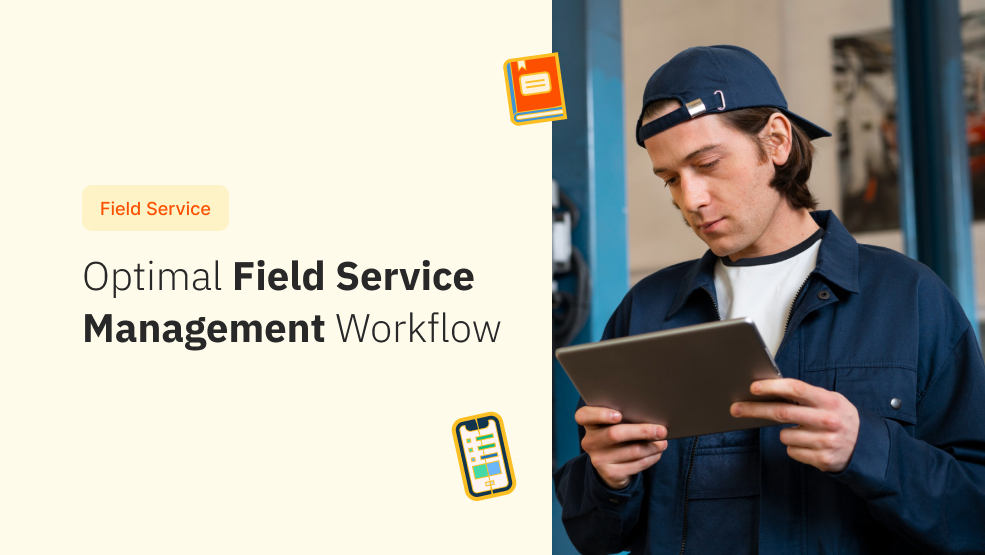In a nutshell, route optimization is all about making sure your field service agents reach the right location at the right time. While it may sound simple, it is in fact a complex business challenge, because there are a ton of factors that are interconnected with each other. Most field service startups still rely on overflowing spreadsheets and printed area layouts when it comes to route planning, in fact 52% of field service companies still plan their operations using outdated tools. Yet, however you choose to do it, route optimization with an intelligent field service automation tool impacts a ton of key areas in your day-to-day operations. These are improved scheduling accuracy, decreased fuel costs, eliminate missed SLAs, and accommodate impromptu scheduling changes. On top of all these, you can delight your customers with faster and seamless delivery experience. The route optimization feature in Zuper app will help you optimize and automate all of these aspects, as we investigate below.
1. Dynamic Workforce Dispatching
It is impossible to take future reschedule requests into account at the time of creating employee routing plans which forces field service businesses to scurry around at the last minute to find an available field agent whenever there is a reschedule request. Information gaps and SLA breaches occur when a field service business doesn’t have the capability to adapt to and accommodate scheduling changes on the go. While it’s good to have backup plans in place like stand-alone agents who are reserved specifically to fulfill reschedule requests, route optimization can guard you better. When one of your customers send in a reschedule request, the route optimization feature moves to turn the situation around, to minimize the impact of unexpected scheduling changes on the fly without missing service deadlines.
2. Intelligent Field Service Routing
Arduously prepared hand-drawn schedules go up for a toss when your field service agent faces a potential roadblock. Most businesses that depend on manually drafted route plans and spreadsheets fail to include aspects like traffic, diversions, construction, or other hindrances that increase travel time of their service agents. While it may look like they are travelling from one job to another in a straight line, assuming so will incinerate scheduling efficiency and increase customer frustration. This can be resolved by a seemingly simple route optimization feature that is intelligent enough to discern and dispatch the right employee to the right job after weighing in an array of metrics ranging from employee skill set to his/her current location.

3. Optimized Territory Planning
For optimal utilization of the field workforce, businesses need to have an optimal territory plan that is capable of adapting to ad hoc requests from customers. However, in a manual environment, territory planning is often overlooked and is performed only seasonally to create a blueprint that becomes a go-to guide for route execution and driver assignment on a daily basis. This transportation blueprint will become redundant in a couple of days since service locations vary daily. Despite becoming irrelevant, field service agents are forced to swap their routes and adapt their schedule to stick to this territory plan which often becomes a hassle and eats away their productivity and efficiency impacting the organization’s service quality directly. Rather than hunting for territory planner who understand data, model building, and field service operations and attempt to win a skilled territory planner in the war for talent, businesses can use the intelligent territory planning feature in tools like Zuper to drive significant savings to their bottom line by increasing the overall utilization of your field workforce while simultaneously making the life of your field workforce easy and improving customer satisfaction.
4. Empowered Field Workforce
Most field workers have no idea what their next day will be like. They have no clue until they get their route sheets for their day until after they sign in to work the next day. Imagine a scenario where your field service agent’s home is located pretty close to their first customer service location, however, since they have no clue about it, they are forced to drive a long way to their workplace to get their routes and then back again to serve their first customer for the day.Such instances are pretty common when your field workforce has little to no visibility of their schedule. As a result not only does your employee satisfaction levels take a hit but so do your customer experience levels. For, an happy employee is the one who will take the effort to make your customers happy. Zuper’s face ID and location-based check-in, coupled with live tracking and route optimization will offer your field service agents a complete review of their day-ahead of them, bestowing them with the power to review and revise their service routes while accommodating last-minute changes right from their mobile phones on-the-go.
5. Maximum Workforce Utilization
For your field workforce schedules to be successful, you need to utilize the full potential of your field staff. When you have no visibility into their productivity level, schedules become irrelevant and inaccurate. Tools like Zuper will offer you real-time visibility of your workforce utilization levels, providing you insights as to who can accommodate impromptu requests and manage all their existing scheduled jobs thus eliminating the need for a manual replanning process, which is long and arduous in nature. Alongside this, modern field workforce management tools offer systems have other forecasting benefits, which include:
- Optimizing staff utilization
- Improving employee productivity
- Reducing travel time
“Before Zuper, scheduling meant Creative Irrigation would have to sift through overflowing spreadsheets and calendars filled with 100+ appointments to find an opening, and repeat the whole process, every time. Not anymore.”– Amy Rojas, Operations Manager, Creative Irrigation
Conclusion
Routing your field service workforce is a complex challenge for all businesses irrespective of their size. The great news is that, in recent years, new field service management tools like Zuper Pro have become more accessible, cost effective, and more intuitive ways to cut down travel times, optimize scheduling changes, and more. An ideal field service software which has a built-in route optimization feature enables field service businesses to slice and dice into their routing challenges and find the right person to perform a task in just a few clicks. It helps businesses cut down on operational expenses and keep both employees and customers happy. Having trouble assigning the right field service agent for the right job? Try Zuper Pro and see how easy scheduling and dispatching can be.







